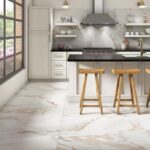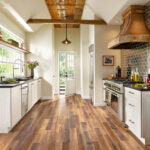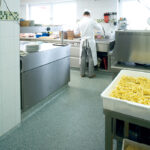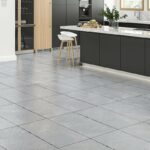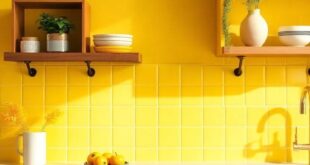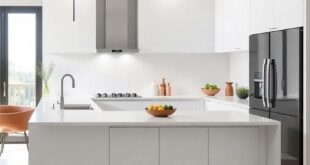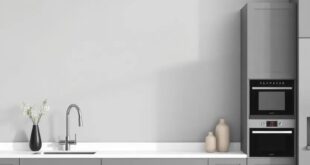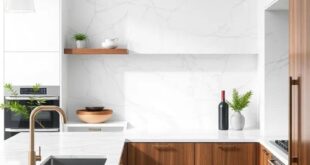The kitchen floor is one of the most important elements of a kitchen’s design and functionality. It is a surface that sees a lot of wear and tear, as it is constantly being walked on, spilled on, and exposed to heat and moisture. When choosing a kitchen floor material, it is important to consider both aesthetic appeal and practicality.
There are many different options when it comes to kitchen flooring materials. Some popular choices include tile, hardwood, laminate, vinyl, and concrete. Each material has its own advantages and disadvantages, so it is important to carefully consider the pros and cons of each before making a decision.
Tile is a popular choice for kitchen floors because it is durable, easy to clean, and comes in a wide variety of styles and colors. It is also resistant to water, stains, and scratches, making it a practical option for a busy kitchen. However, tile can be cold and hard underfoot, so it may not be the best choice for households with young children or elderly individuals.
Hardwood flooring is another popular option for kitchen floors. It adds warmth and character to a kitchen and can be refinished if it becomes worn or damaged. However, hardwood is not as durable as tile and can be prone to water damage if not properly sealed.
Laminate and vinyl flooring are budget-friendly options for kitchen floors. They are easy to install, come in a wide range of styles, and are resistant to water and stains. However, they are not as durable as tile or hardwood and may need to be replaced sooner.
Concrete flooring is a trendy option for modern kitchens. It is durable, easy to clean, and can be customized with a variety of finishes. However, concrete can be hard and cold underfoot, so it may not be the most comfortable option for a kitchen where a lot of time is spent standing.
In addition to choosing a material, it is also important to consider the color and pattern of the kitchen floor. Lighter colors can make a small kitchen feel larger, while darker colors can add depth and warmth to a larger space. Patterned floors can add visual interest and personality to a kitchen, but they may not be suitable for all design styles.
Overall, the kitchen floor is an important element of a kitchen’s design and should be chosen carefully based on both style and functionality. By considering the pros and cons of different flooring materials and colors, homeowners can create a kitchen floor that is both beautiful and practical.
 Decorationg Interior Design
Decorationg Interior Design

